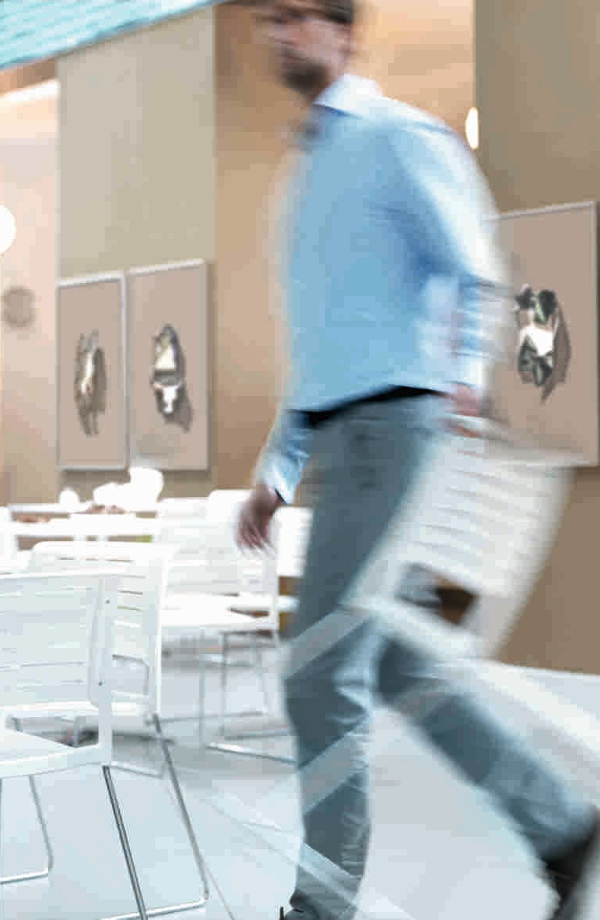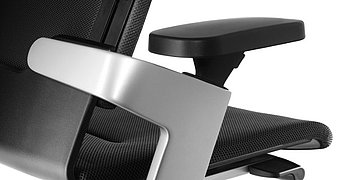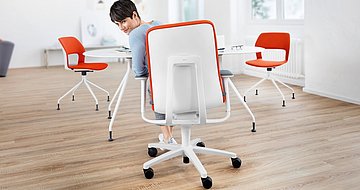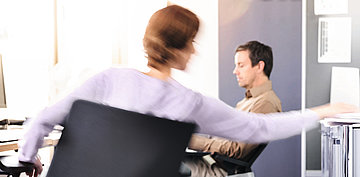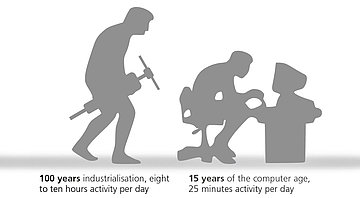Wilkhahn dynamic office - Office for motion
Both globally and locally, businesses are faced with the challenge of ensuring efficient information flows for everyone involved. In a knowledge-based era efficiency and motivation are vital. But one of the most pressing problems is often overlooked. Physical activity is lacking in office spaces and is affecting the health of more and more people increasingly frequently. Employers often respond by offering exercise programmes, back workouts, or health events. But a more logical move would appear to be to revert to physical activity in places where it has been systematically cut back, in other words to the buildings themselves. To achieve this goal a paradigm shift is required in terms of planning too. For decades office spaces were designed to be as comfortable and compact as possible. Now more physical activity is required.
Office furniture manufacturer Wilkhahn has published a brochure entitled “Office for Motion” which sums up the most important research and development principles. The publication provides a summary of the biological principles, results of current studies and new organisational and office concepts. Architects can receive it free of charge by contacting
Office-for-motion@wilkhahn.de
An architectural blueprint to foster offices for motion
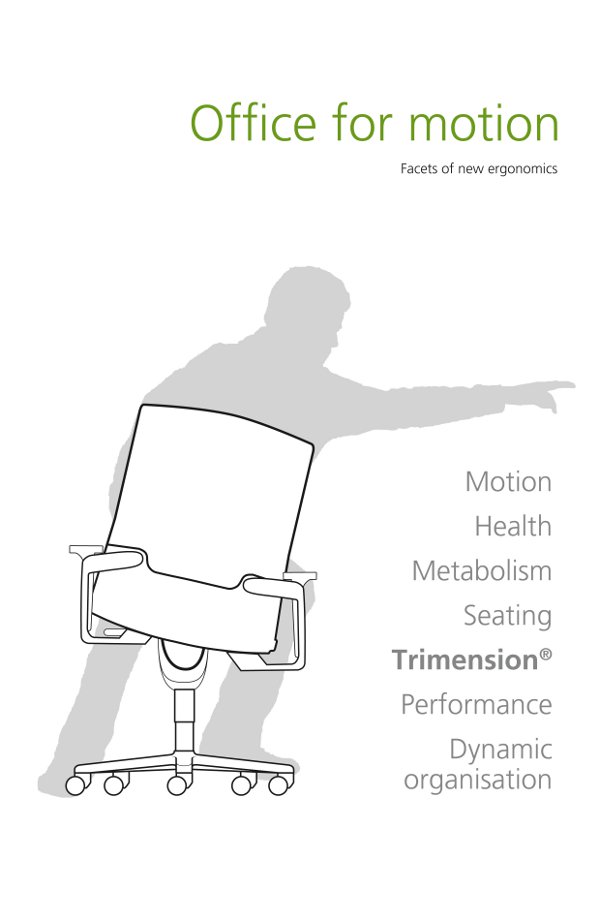
Paradigm shift
New principles in designing office environments could be promoting diversity instead of standardisation, encouraging a wider instead of a smaller sphere of operation, stimulating instead of kerbing the senses, increasing instead of decreasing motivation, offering a dynamic and not a static environment and nurturing social interaction rather preventing it. In the interests of furnishing concepts, types of organisation and room structures that truly place people at centre stage for the first time in business history. When we’re talking about an integrated approach to triggering physical activity, the journey’s the reward!
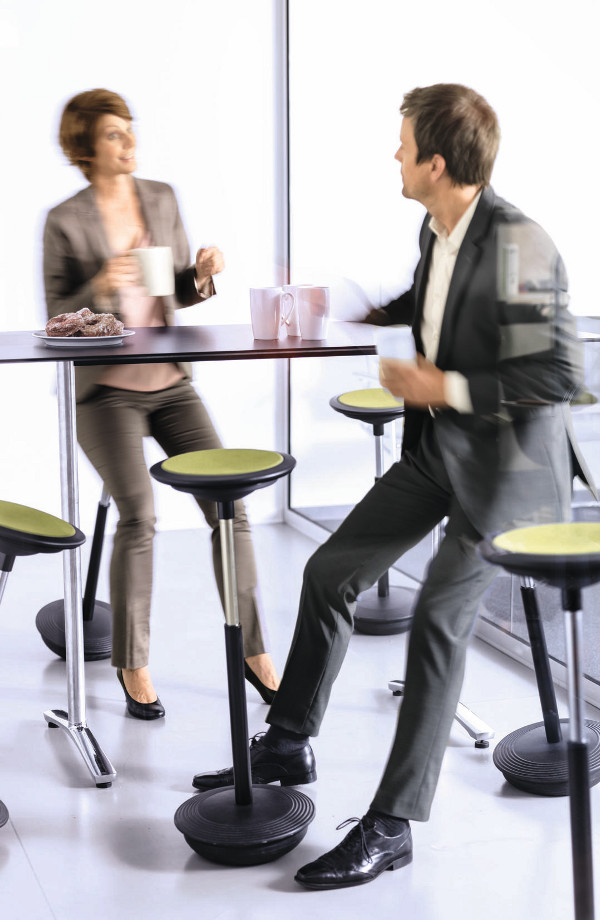
Don’t book the nearest conference room for meetings, but the one further away.
Change the odd meeting held sitting down to one held while standing up. As a result, people will participate more keenly, meeting times will be shorter and efficiency greater.
Banish ready-to-use rooms to the past. Invite people on training courses and in workshops to set the room up themselves.
Put equipment in a central place. Single printers on desks are not just a convenient option, but are also harmful to health due to heat, noise and emissions of fine dust. Joint printers are much more economical, ensure people have to get up to use them and actually meet one another.
If possible, spread computerbased work out, for example by creating dedicated spaces for Internet research.
Take the stairs and not the lift. Climbing stairs boosts and gets your muscles and circulation going. If you restrict usage of lifts to people who have to use them, then voluntary physical activity is encouraged all the more.
Develop a culture of physical activity. At desks or in meetings, ensure that people don‘t sit still for too long. Getting up, stretching and walking a few steps works miracles – and might even inject some energy into those long, drawn-out meetings.
